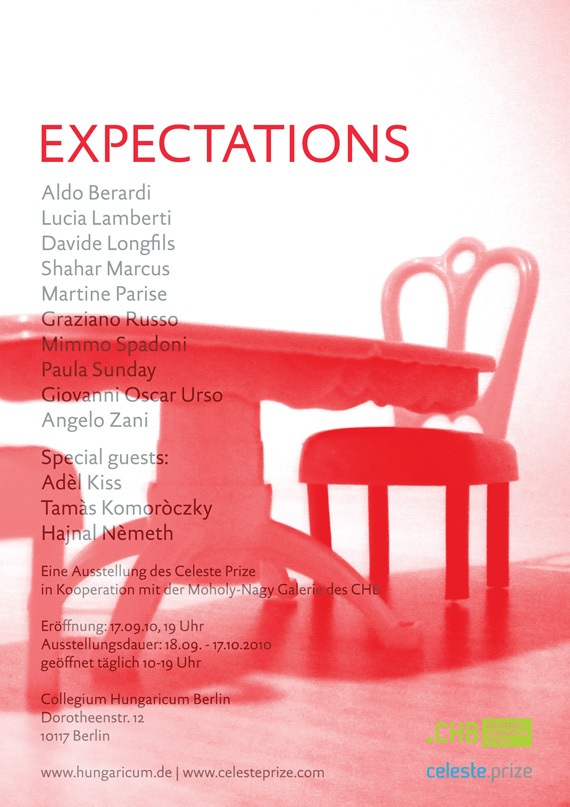
Expectations in Berlin
Celeste continues its annual investigations of relevant themes which affect artists and society. This year's chosen theme, 'Expectations' (in 2009 the theme was 'dependtendency'), will be represented by the following selected artists:
10 Artists for New York Expectations
10 Artists for Berlin Expectations:
Aldo Berardi, Heaven Can Wait, photograph
Lucia Lamberti, NBC, painting
Davide Longfils, Next World, photograph
Shahar Marcus, Still Burning, video
Martine Parise, Intersezioni3, installation
Graziano Russo, 114 barchette di corano sul mar ionio, photograph
Mimmo Spadoni, unit of time_4, photograph
Paula Sunday, Fabbrica (from "That's all, folks!" project), photograph
Giovanni Oscar Urso, Campana, photograph
Angelo Zani, Dawn at Cape Comorin, painting
4 Shortlisted Artists (not in exhibition)
Barbara Karwowska, Teatro, painting
Loredana Longo, Nothing is as it seems, installation
Emanuele Rocchi, Prima del Tempo, installation
Sara Torzuoli, Intro, photograph
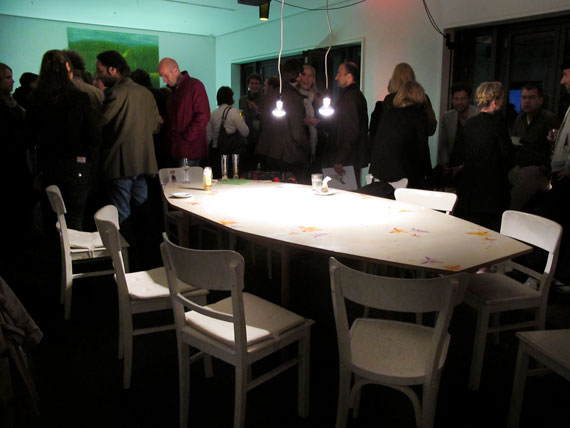
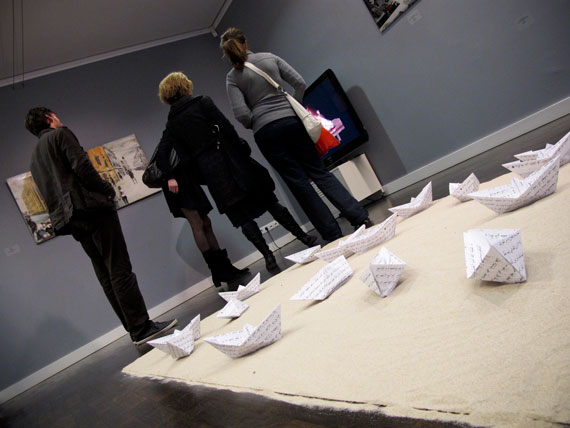
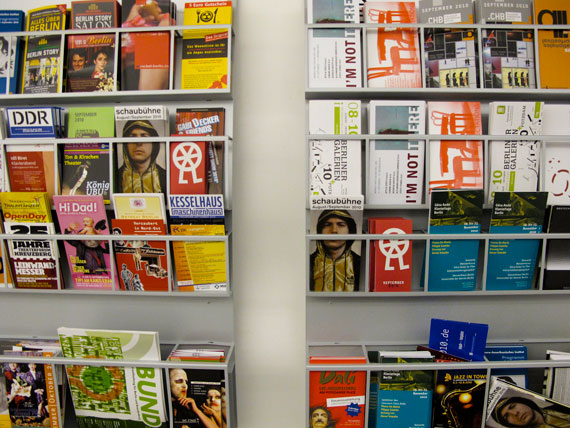
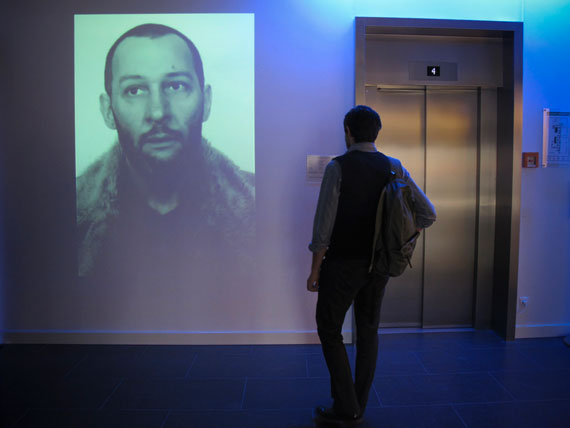
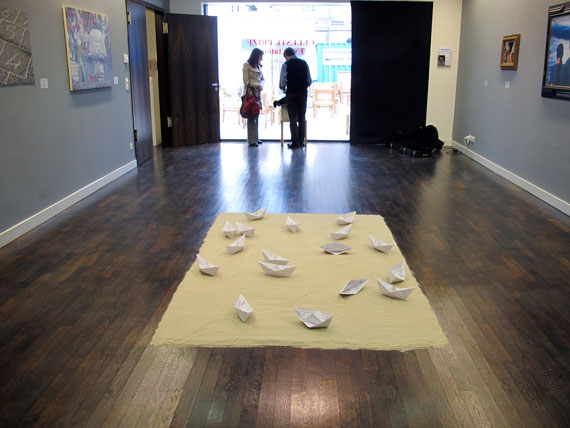

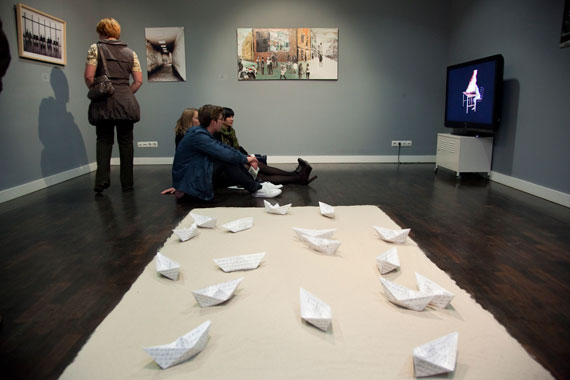
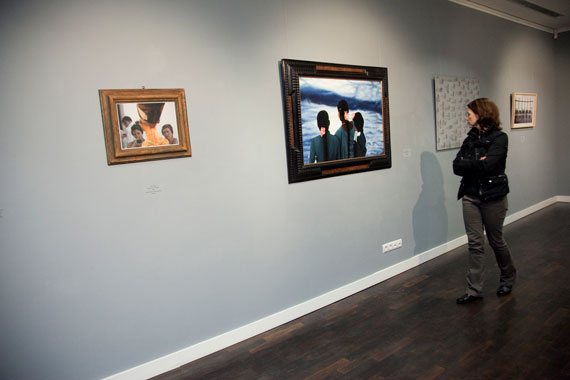
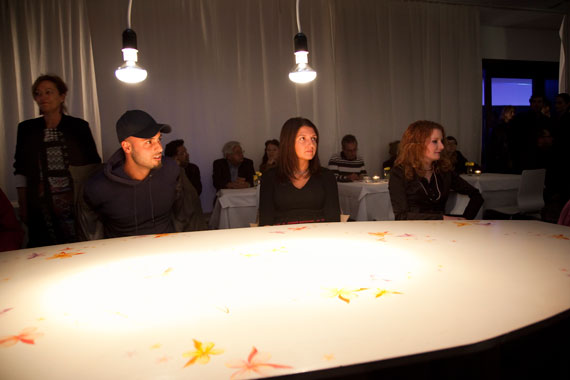
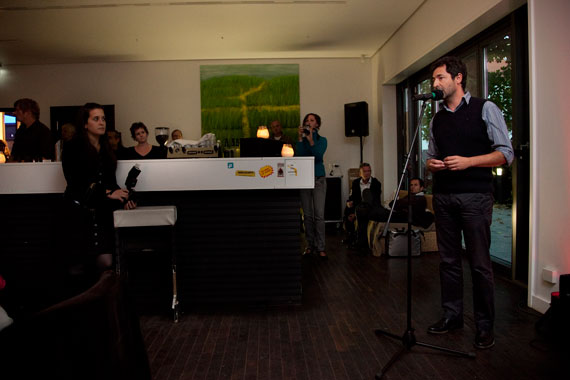
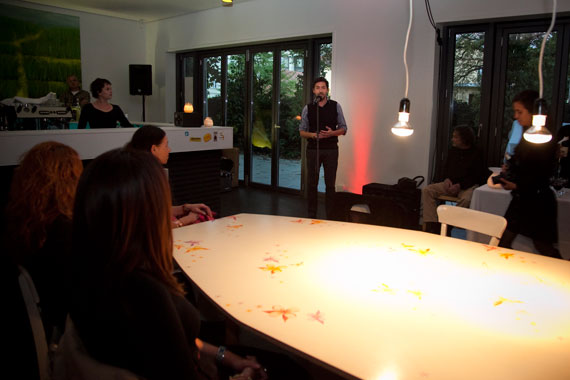
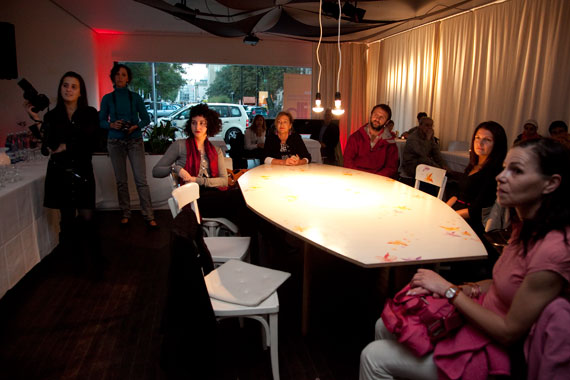
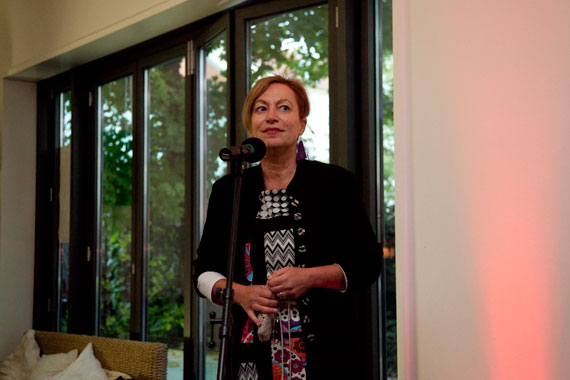
Video & Photos - Presentation of Expectations by Manon Slome, and group discussion on the theme in New York.
Critical text written by Manon Slome published in the catalogue :
Expectations: The moment to come….
"Less than a decade ago, the term “expectations” had a very positive ring. Money seemed in endless supply and a new super class was in the process of recreating an even shinier “Guilded age.” Everything that did not have the crisp feel of a new dollar bill was termed, “so Twentieth Century;” houses got bigger, gadgets ever smaller and faster; prices of art rocketed and art schools became seen as breeding grounds for the next wave of super stars.
But we are now experiencing the worst financial crisis since the Great Depression and the ensuing waves of recession have forced us to change our lives in ways large and small. It's a world of "new normals," with more belt-tightening, less income and, in many cases, a newfound gratitude for the most basic human comforts: family, home and health.
But this can also be seen as a time of opportunity, with prospects of paradigms to shape for those on the pulse of change. But whichever side of the new normal we are on, there is a sense of just when you think you have adapted, things shift again. What is changing in the art world? Well, competitions such as this one, the Celeste prize, have changed the way artists can present their work to the world. Technology has certainly de-centralised the art world, giving artists in the remotest corners of the earth a platform. The growth, too, of art commerce sites has removed the hegemony of the gallery system and would be buyers and curators in search of material are as likely to do research on line and through such sites as Saatchi before jumping on a plane for the next art fair. (Fortunately technology rushes in where budgets fear to tread.)
But given that far greater accessibility, has art itself, kept pace with change. How are artists reflecting the current zeitgeist? While many people bewailed the drop in the art market during the great recession, I was quietly optimistic, hoping that the drop in prices would take artists back to their studios to submerge themselves in some really experimental work instead of churning out works to fulfill the demands of would be clients (are waiting lists for paintings any more healthy for societal values than waiting lists for handbags?) In many cases I have seen that work emerge and have been proud to exhibit much of it in No Longer Empty exhibitions – an organization which in itself is reflective of the changing paradigms of art production and presentation.
It is with that desire to look for change and renewal that I set the theme of the current Celeste prize competition. “Expectations” I hoped and expressed in my curatorial statement was “- fitting perhaps for artists who have entered a juried prize and for an economic and political climate where boundaries of the expected are continually being challenged.”
What would these hundreds of applicants produce given the challenge to embrace the unexpected, to set in motion a feeling, a sensation of the moment yet to be born.
I am sad to write that remarkably little of the unexpected was submitted. Instead, there were reams of stilted, bad academic paintings, clichéd photography and a repetitious reworking of aspects of visual culture that were presented without critique or irony as if the artists were presenting something original and new. WAKE UP ARTISTS! YOU CAN DO BETTER.
In addition, some of the submissions were badly under-prepared. To take advantage of the democratic opportunities of such a prize, artists need to learn how to submit work given that only a virtual viewing is possible. I would encourage artists to connect in their statement the work to the theme. Speak also about how the submitted work relates to your larger enterprise as an artist. Use the statement as your chance to connect with the viewer on a one to one basis. Be more rigorous in making the most of your application as you have the chance to be seen by the thousands of visitors to the Celeste site.
The selections eventually made for the New York and Berlin exhibitions by myself and co-curator, Julian Navarro, reflect a conscious choice by artists, even when using the traditional formats of painting and photography to engage with the theme, to set up in the viewer’s mind the speculation of what happens beyond the frame shown in the work. Shahar Marcus, for example, was selected for both Berlin and New York exhibitions, as his work from all the submissions, unleashed a trail of possibilities for future narratives and states. Combining video, performance and sculpture, the two works, “Still Burning” and “Freeze, ” juxtaposed perishable materials, such as dough and ice, in relation to his own body. This relationship to his materials and the precarious role of his body as both human subject and creator holds the audience in a drama of suspension that makes us want to tear down the veil between art and life.
In a similar vein the work (for Berlin) of Davide Longfils - Next World,
2007, Paula Sunday, Fabbrica (from"That's all, folks!" project), 2010, Martine Parise – Intersezioni 3, 2010, Aldo Berardi - Il paradiso puòattendere - Heaven Can Wait, 2010; Giovanni Oscar Urso, Campana, 2010, Lucia Lamberti , NBC, 2010 ; Angelo Zani, Dawn at Cape Comorin, 2008; Graziano Russo, 114 barchette di corano sul marionio, Mimmo Spadoni, Unit oftime_4, 2008, all gave a sense of humanity on the verge of reaching out to new realities, sensations, knowledge and horizons that we peer forward and inward to share.
For the New York exhibition, I am saddened that Loredana Longo’s –Nothing is as it seems (2009) was unable to be included due to budget restraints. Perhaps that should have been a consideration made prior to submitting the work. Given such budget restraints, it is also surprising that the new media work was not stronger and that there were no entries that engaged such transport free options as computer based art. The selections for New York include: Francesco Minucci, Little Boy, 2008; Francesca Romana Pinzari , The first Time We Kissed, 2010, Loredana Grasso | Déjà-vu; ,Patrizia Bonardi | Lasting, 2008 Kurt Hoerbst - Julia 11, 2008; Marco Santuccio - Equilibrio Funk, 2010 ; Mario Rossi, Synchronicity 3, 2009; Liz West, Yellow Chamber, 2010, and Elena Fantini , Gasoline pump, 2010.
Congratulations to all the artists selected. We look forward to seeing the works in the exhibitions." - Manon Slome.
Text by Julian Navarro:
"What’s the future but the illusion of a different present? What’s the past but a memory that can never live up to the actual experience? What’s the present but the sand going through the neck of a silent hour glass? Don’t we all have expectations? We are all waiting for something to happen, to change, to come, that’s what keeps humanity in motion: the idea of tomorrow, of the days to come.
Planning ahead is always part of the day to day activities: this evening, tomorrow, next week, on Christmas, next year, ten years from now, when I grow up. Romanticizing the past is common ground; somehow we always find a way to believe that every past moment was better, happier, easier, healthier, lovelier. And then there’s today, so fragile in its own existence, that second that goes by unnoticed, the bliss of a minute, the uncatchable passing of time that becomes a memory as soon as we are able to give out a sight and come to the end of this phrase. And by the usage of words we plan the future, describe the past or try to sum up the present into a block of nowadays events.
J. L. Austin, an expert in language philosophy, pointed out in his famous manifesto “How to Do Things with Words” that words can go beyond the merely descriptive, there are sentences that not only allow us to describe, but that are also capable of performing an action, performative utterances. In other words, sentences can perform an action while describing a new state of being in the same time and space.
If we take this concept out of the purely linguistic it can be applied to any artistic expression, therefore art is not only a static description of reality but an action that can modify reality. The idea of direct action in visual arts is generally related to performance, but recently it has been applied in other media such as photography, painting, sculpture, video and installations.
During the last decade, artists have been exploring the relationship between modern and contemporary, using as a starting point not only the fusion of these two periods – transformed into a new space to analyze the past -, but the goal of generating a series of questions that stimulate the exploration beyond all expectations.
Uncertainty is the guideline of times to come, we walk through the path of a destiny that has not yet been written, and then again it could have been. Living in the now is the phrase of impossibility given that time goes by faster than perception and even as these words are being read the final understanding is a thing of the past. But even further, we are unable to live in the now without projecting ourselves in the now to come. So we live in the edge of time, taking the risk of projecting ourselves into a future that might never come, since when future finally arrives it becomes present and the future is transformed into a different expectation.
“I am giddy, expectation whirls me around,
The imaginary relish is so sweet
That it enchants my sense.” - William Shakespeare
Would this moment be romanticized? What would we feel looking back on it? How do we look at the past from today’s perspective? How would we look upon today once it becomes yesterday? What would be today without yesterday? Tomorrow without today? Yesterday without tomorrow?
“We hardly believe any longer that a global situation can give rise to an action which is capable of modifying it – no more than we believe that an action can force a situation to disclose itself, even partially” . Many questions about the future of many subjects such as biotechnology, communications, social issues, the environment, politics, economy, human rights, security and terrorism, have been handed to politicians, philosophers, artists, writers and scientists over the years, especially now while we are living one of the most difficult times in our history; but how many of these questions have been answered? How many of these questions have artists tried to respond through their work?
Expectations Berlin - New York presents a series of artworks that reflect the insight of an act in full motion, art going from the merely descriptive to the action itself. The artists are showing the expectation of a future that is just one step away while transforming the present into past; this day is gone and has introduced itself in the idea of what went before. The exhibit project the story of a different instant that looks back upon the one we are living as a memory. The same distance separates us from the physical object in front of our eyes and from the imaginary becoming real in our mind. It is an exhibition characterized by artworks that achieve a new aesthetic language, allowing us to contemplate the movement beyond the static images, a modification of time and space that captures the present as a picture of reminiscence.
So through this path of future expectations the audience is to be abducted from this moment and taken into an imagery of time that captures the historical past existence of the present. Given the hopelessness of capturing the present, the intention is to capture the future while transferring the viewer to that moment where time becomes a blur of awareness and reality.
Time is in the eye of the beholder, the meaning, the illusion, the desire will only come from the point of view of today’s present as tomorrow’s past. No guidelines as to how live the future, but an open spectrum of interpretation that can provide an unusual idea of how humanity perceives time.
Here you can explore new unlimited territories full of possibilities, a new energy that turns the present moment into history and the future into present, through the mirror image of our deepest expectations." - Julian Navarro
Artwork was selected by Manon Slome and Julian Navarro, while three Hungarian special guests will be invited by Vera Baksa-Soos:
Adel Kiss
Tamas Komoroczky
Hajnal Nemeth
Berlin, Germany - View works
Exhibition from 17 September to 18 October 2010 at the Collegium Hungaricum
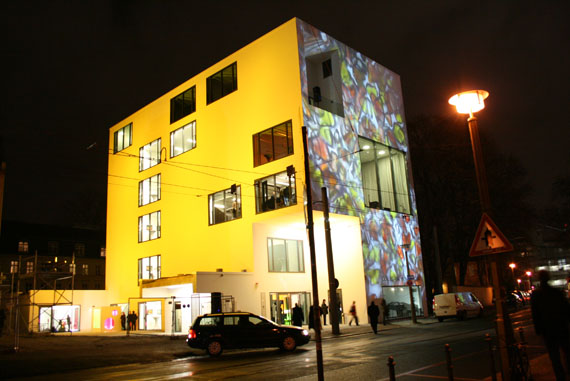
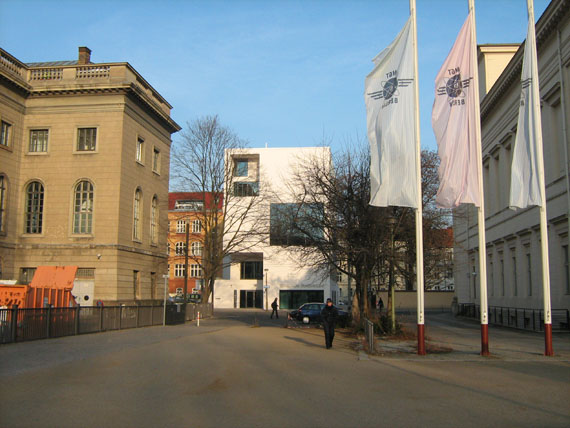
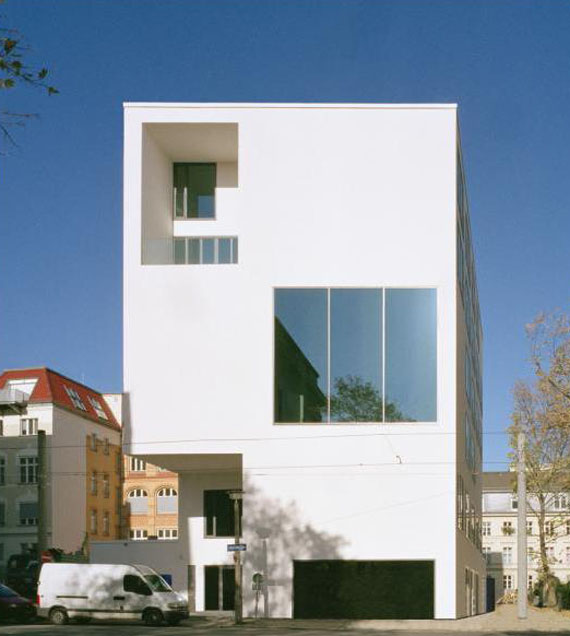
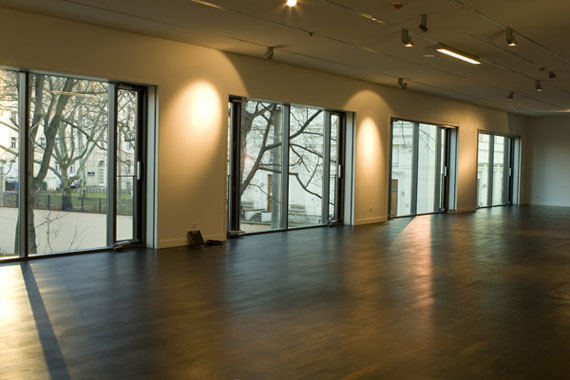
Theme
Artwork presented to 'Expectations' will have to follow the curatorial idea presented by Manon Slome:*
“The origin of a work of art, that is the origin of both the creators and the preservers, which is to say of a people’s historical existence - is art. That is so because art in its essence is an origin, a distinctive way in which truth comes into being, that is, becomes historical,” - Heidegger.
"Art in this sense has been received as an enframing mode of revealing – of an event, a life, a sensation encoded and re-represented from the past into the present. This sense of historicity, that we are witnessing something that happened in the past and that we are viewing now in the form of painting, video, film etc. has been embedded into our consciousness as audience to a work of art.
In contrast to this mode of image – however loosely 'image' is interpreted - being concerned with representation of condensed experience, performance art, interactive digital or computer art for example, creates an image that is simultaneous with its consumption. We experience it in real time as the image is made or performed and as the next action is anticipated.
My proposition would be to develop an exhibition that takes the image as something concerned less with representation in an historical sense than as a tool for setting something into motion - whether it be action, emotion, a state of being or becoming; a sense that the image leads to something beyond the scope of the painting or photograph, that the moment we see in the frame is just the frozen predicament before what will happen next.
Perhaps the title could be - Expectations - fitting perhaps for artists who have entered a juried prize and for an economic and political climate where boundaries of the expected are continually being challenged.
Artists should feel free to experiment with the theme of 'Expectations' looking at the concept in any way they want to interpret it – anticipation, probability, hope, future, yet to be - in any media or selection of media. The whole idea of anticipation is that it is open ended, looking forward instead of to the past. In essence, the curatorial intention is to be liberating."
Who can participate?
Any artist who is a current ‘Prize’ Member can present an artwork in each of the two locations. All artworks will have to investigate to the best of each arists’ ability the chosen curatorial idea, with particular reference to the necessities and tensions of the geographical area in which the exhibition takes place. Each ‘Expectations’ will have a different selection of artworks on exhibition. There will be 10 works selected for Berlin and 10 works selected for New York. Artists invited to exhibit their works will be responsible for all costs related to transport of their works to and from exhibition locations, as well as personal logistics.
Deadline 6 August
Works for ‘Expectations’ Berlin and New York no later than midnight, 6 August 2010.
Catalogue
A catalogue containing all selected works for Berlin and New York 'Expectations' will be published, and will include critical texts by curators as well as illustrations of artwork on exhibition.
*Manon Slome (PhD) is an independent curator working in New York City. From 2002 to June 2008 she was the Chief Curator of the Chelsea Art Museum in New York since its inception in 2002. During that time, she has curated and overseen a program of some forty exhibitions, symposia and museum publications as well as monographs and scholarly essays. Ms. Slome became highly involved with the Israeli art scene during her research for the exhibition, Such Stuff as Dreams are Made on”, (2005) and has followed and researched the Israeli scene for the last 3 years. Prior to the CAM, Ms. Slome worked as a curator at the Guggenheim Museum for 7 years and was a holder of a Helena Rubestein curatorial fellowship at the Whitney Independent Study program. Her recent book ‘The Aesthetics of Terror’ was published in 2009. |